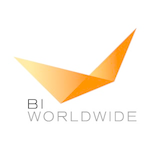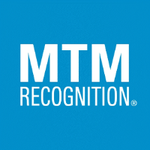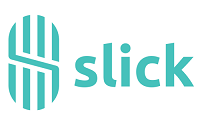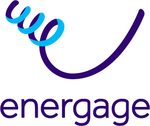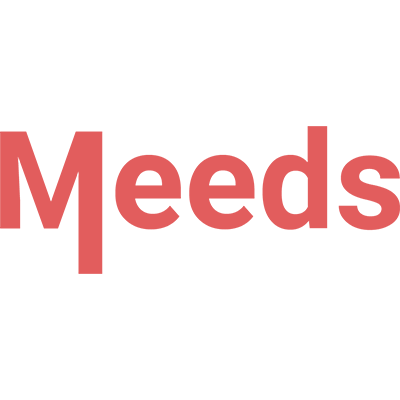What Is Employee Recognition Software?
Employee recognition software is a powerful tool that helps companies identify and acknowledge the contributions made by their employees to the company's success. This digital platform streamlines the entire recognition process, making it transparent, egalitarian, and effective. Essentially, employee recognition software acts as a hub for managers and employees to share compliments, track progress, and evaluate the outcomes of employee appreciation programs.
It also provides valuable information and insights that enable businesses to assess employee engagement and productivity. One of the most significant advantages of employee recognition software is its ability to foster an environment of appreciation and motivation within the company. Through features like gamification, social recognition, and peer-to-peer recognition, it encourages staff members to recognize one another's efforts and achievements, which fosters a healthy work environment.
Additionally, employee recognition software offers a variety of choices for customizing recognition programs to meet the needs of a firm. From creating incentive budgets and selecting the types of prizes to determining the prerequisites for recognition, organizations have total control over the development and implementation of their employee recognition strategy.
Additionally, as remote and dispersed teams have become more and more common, employee recognition software has become an essential tool for preserving employee engagement and connectivity. By facilitating seamless recognition and gratitude regardless of location, it improves employee morale and retention.
What Are The Recent Trends In Employee Recognition Software?
Employee recognition software has become an indispensable tool for firms of all kinds, since it can significantly boost employee morale, engagement, and overall performance. In recent years, there have been numerous significant trends in this sector that consumers should be aware of. In this tutorial, we will go over the most recent innovations in employee recognition software and what factors to consider when selecting the best one for your firm.
1. Integrate With Other HR Systems: Employee recognition software is increasingly being integrated with other HR systems, including performance management, learning and development, and HRIS systems. This enables a more complete approach to employee recognition because it may be linked to specific accomplishments and progress within the organization. This integration also simplifies the process for HR departments, making it easier to track and manage recognition initiatives.
2. Mobile And Social Recognition: Another development in employee recognition software is an increased emphasis on mobile and social recognition. With a growing number of employees working remotely or on the go, having a mobile-friendly recognition platform is critical. Social recognition, such as peer-to-peer recognition or spreading recognition on internal social networks, can significantly boost the effect and awareness of recognition campaigns.
3. Customization And Personalization: Many modern employee recognition software platforms now include customization and customizing features. This enables businesses to personalize their recognition programs to their individual requirements and company culture. Custom incentives, personalized remarks, and branding can all help to make employee recognition more memorable and impactful.
4. Data-Driven Insights: Data and analytics have become essential components of most employee recognition software packages. These insights can provide valuable information on the effectiveness of recognition efforts and employee engagement. They can also help identify high-performing individuals and places where appreciation is lacking.
5) Gamification: Incorporating gamification elements into employee recognition software has also become a popular trend. By adding elements of competition and rewards, gamification can increase engagement and motivation among employees. It can also make the recognition process more enjoyable and interactive.
Benefits Of Using Employee Recognition Software
In today's modern workplace, employee recognition software has proven to be an invaluable tool for firms of all sizes. As businesses attempt to build a healthy and engaging work culture, recognizing and rewarding their employees' accomplishments has become increasingly important. Here's where employee recognition software comes in. In this buyer's guide, we'll look at the many advantages of adopting employee recognition software and why it's a good investment for your company.
1. Improves Employee Morale And Motivation: One of the most important advantages of employee recognition software is its capacity to increase staff morale and motivation. This program can assist boost overall employee satisfaction by allowing employees to be recognized for their hard work and achievements. Employees who feel appreciated and respected are more likely to be inspired to give their all, which leads to higher productivity and job satisfaction.
2. Promotes A Culture Of Appreciation: Employee recognition software enables seamless and timely employee recognition, resulting in an organizational culture of appreciation. This can have a good knock-on effect, motivating employees to recognize and respect their coworkers, fostering a sense of unity and camaraderie. As a result, overall employee involvement can be increased, fostering a healthy work environment.
3. Improves Employee Retention: Recognition is an important aspect in employee retention. In fact, a lack of acknowledgment is one of the most common reasons individuals leave their positions. Using employee recognition software, you can demonstrate to your employees that their efforts are recognized and valued, helping them feel more connected to the organization. This can result in higher loyalty and lower staff turnover rates, ultimately saving your firm time and money.
4. Provides Data For Performance Evaluation: In addition to recognizing employees, this software provides useful data and insights for performance reviews. The software monitors and assesses an employee's accomplishments and contributions, offering a complete picture of their performance. This can help managers make better decisions on promotions and bonuses, contributing to a fair and transparent performance evaluation process.
5. Simplifies And Streamlines The Recognition Process: Employee recognition software makes it easier and more efficient to acknowledge and appreciate employees. It minimizes the time-consuming and arduous manual procedure by providing automatic features such as reminders, personalized recognition forms, and budget monitoring. This saves managers time while also ensuring that employees are recognized consistently and fairly.
Important Factors to Consider While Purchasing Employee Recognition Software?
When it comes to choosing employee recognition software, there are numerous key elements to consider. These aspects will have an impact not just on the software's effectiveness, but also on its usability, compatibility with existing systems, and possible ROI. Before deciding which employee recognition software to invest in, consider the following crucial factors:
1. Goals And Objectives: Before you begin your search for the best employee recognition software, you should clearly identify your goals and objectives. Determine your goal for using this program, whether it is to boost staff morale, increase productivity, or improve overall corporate culture. A thorough grasp of your objectives will allow you to limit down your selections and select the program that best meets your requirements.
2. Features And Functionality: When comparing different employee recognition software options, pay particular attention to the features and functionality provided by each. Consider features like peer-to-peer recognition, real-time feedback, and configurable recognition programs. Consider whether the software has a user-friendly interface and how effectively it interfaces with the various systems and platforms that your firm utilizes.
3. Scalability: As your company grows, so should your employee recognition program. As a result, it is critical to select software that is flexible and adaptable to your company's evolving requirements. This prevents you from having to switch to new software as your company grows, which can be expensive and time-consuming.
4. Security: Employee recognition software frequently contains sensitive information, such as employee personal information and performance metrics. Make sure to properly investigate the security measures and procedures implemented by the software supplier to ensure the safety and confidentiality of this data.
5. Customer Assistance: When purchasing any product, it is critical to assess the amount of customer assistance given by the vendor. Look for a software provider who provides consistent and fast customer support, including implementation, training, and continuing technical support.
6. Pricing: As with any purchase, pricing is an important factor in the decision-making process. When comparing employee recognition software, take into account the total cost, which includes any upfront fees, annual subscription fees, and additional prices for added capabilities. Keep in mind that the cheapest option is not always the greatest one in terms of value and quality.
What Are The Key Features To Look For In Employee Recognition Software?
Employee Recognition Software is a crucial tool for any firm trying to increase employee engagement, motivation, and retention. With the increased understanding of the value of employee appreciation, the market is overflowing with software solutions. As a buyer, it can be difficult to choose the best one for your firm. To make an informed decision, below are the essential characteristics to look for in Employee Recognition Software:
1. User-Friendly Interface: The first and most important quality to consider is ease of usage. The program should have a simple interface that both employees and management can easily explore and use.
2. Customization Options: Each organization has its own distinct culture and values. Look for software that allows you to customize the recognition program to reflect your company's culture and beliefs.
3. A Range Of Recognition Features: It is critical to have a range of recognition features, including peer-to-peer recognition, team recognition, and management recognition. This ensures that all employees, regardless of employment rank, are acknowledged and valued.
4. Points And Reward System: Incentivize employees by implementing a points and reward system in which they can earn points for recognition and redeem them for rewards. This can be an effective motivator for employees to succeed and contribute to the organization.
5. Performance Tracking And Analytics: Look for tools that can generate complete information on employee recognition activity. This information can aid in tracking employee performance and selecting top performers for future recognition.
6. Integration With Other Resources: To enhance the software's efficacy, it should work seamlessly with other resources in your organization, such as performance management systems or employee communication platforms.
7. Mobile Accessibility: In today's digital age, it is critical to have a mobile-friendly version of the software. This enables employees to access and participate in recognition programs from anywhere and at any time.
8. Security And Data Privacy: Make sure that the program has strong data privacy and security safeguards in place to secure critical employee information.
9. Customer Service: Look for software that provides dependable customer service in the event that you encounter any problems or have questions. Check on their response time and availability to serve you.
10. Pricing: Finally, examine the cost of the software. Look for solutions that are within your budget and provide the most value for money. Investing in Employee Recognition Software can significantly improve your company's overall performance and culture. By examining these essential aspects, you can make an informed selection and select the finest software for your organization's needs and goals.
Why Do Businesses Need Employee Recognition Software?
As firms focus more on employee engagement and retention, the usage of employee recognition software is becoming more common. This specialist software provides numerous benefits to firms of all sizes, making it an indispensable tool in today's competitive market. One of the primary reasons why businesses use employee recognition software is to promote a happy and productive work environment.
Implementing a formal recognition program helps employees feel valued and acknowledged, which can boost morale, motivation, and overall job satisfaction. This, in turn, can boost productivity and propel the business forward. Furthermore, employee recognition software provides a more efficient and systematic approach to employee appreciation.
It reduces the need for manual processes by providing features like as automated reminders and real-time tracking, as well as ensuring that recognition efforts are uniform and fair throughout. This saves time and work while also eliminating any potential bias or favoritism. Furthermore, recognition software helps firms gain vital insights and data on employee performance and engagement.
This data can help identify top performers, assess the success of recognition programs, and even highlight areas for improvement. Businesses can use this data to make more educated decisions about employee recognition methods and achieve greater results. Another important feature of employee recognition software is the capacity to improve workplace communication.
The platform allows employees to openly give and receive appreciation from their peers and management, which improves team collaboration and fosters a feeling of community in the workplace. When choosing employee recognition software, firms must evaluate their specific requirements and budget.
With so many software options available, it's critical to select one that provides configurable functionality while remaining within your budget. Finally, investing in employee recognition software can yield concrete results, such as enhanced staff retention, productivity, and a better work environment.
How Much Time Is Required To Implement Employee Recognition Software?
The time required to implement employee recognition software varies depending on the specific software and the size and complexity of your organization. In general, the process can take anywhere from a few weeks to a few months. The first step in implementation is typically setting up the software, which can involve customization, integrations with other systems, and data migration.
This process can take a few days to a few weeks, depending on the level of complexity. Once the software is set up, the next step is training your employees on how to use it effectively. This can take a few days to a few weeks, depending on the size of your organization and the complexity of the software. The final step is rolling out the software to your employees and getting them to adopt it.
This process can take a few weeks to a few months, as it involves change management and ensuring that employees are using the software correctly. To ensure a smooth implementation process, it is important to have a dedicated team or individual leading the project and providing support and training to employees throughout the process.
What Is The Level Of Customization Available In Employee Recognition Software?
Customization is an important consideration when selecting the best employee recognition software. The program may be customized to fit the unique requirements of your company, which makes it an effective tool for increasing staff motivation and engagement. What degree of personalization does employee recognition software offer, then? High levels of customisation are available with contemporary employee recognition software, allowing you to tailor the platform to your business's particular culture and values.
In order to guarantee a smooth interface with your current systems, this involves bespoke branding, such as adding your company's colors and logo. The platform's features can also be customized to fit your unique recognition campaigns and programs. The ability to design unique incentives and recognition programs for various employee groups is one of the major benefits of customisation in employee recognition software.
For example, depending on their performance measures, you might establish clear objectives and incentives for teams, departments, or individual workers. This degree of customization gives the recognition process a unique touch, boosting its potency and impact.
Additionally, a lot of employee recognition software offers configurable analytics and reporting, which gives you the freedom to monitor and assess the effectiveness of your recognition initiatives. Whether your reports are in the form of tables, charts, or graphs, you can choose which data to include and what format works best for you.
Which Industries Can Benefit the Most From Employee Recognition Software?
A key component of any successful business is employee recognition. In addition to increasing staff enthusiasm and morale, it also fosters a favorable work atmosphere, which raises output and contributes to overall company performance. However, HR professionals may find it difficult to manage and quantify employee recognition, particularly in larger firms. Software for employee recognition is useful in this situation. A useful tool that automates and simplifies the process of recognizing and rewarding employees' contributions is employee recognition software. It enables managers to track and evaluate the success of recognition programs, show appreciation for staff members in real time, and offer insightful information for future enhancements.
Any industry can profit from employee recognition software, but some industries stand to gain the most from it. These consist of:
1. Healthcare: Healthcare workers frequently put in long shifts and handle stressful situations in this fast-paced and extremely demanding business. Healthcare companies can increase employee morale and motivation to keep delivering high-quality care by using employee recognition software to recognize and value the hard work of their employees.
2. Retail: Employee turnover is a recurring issue in the retail sector, which causes organizations to incur large expenses. By fostering a great work atmosphere and demonstrating to staff members that their efforts are respected and appreciated, employee recognition software can assist increase employee retention.
3. Technology: The IT sector is renowned for having highly qualified and driven employees. Tech firms can use employee recognition software to identify and reward their staff members' technical proficiency, which will increase their self-esteem and motivate them to keep pushing the envelope and innovating.
4. Education: Software for employee recognition can be a helpful tool in the education sector for recognizing the efforts and commitment of teachers and staff. Students may then perform better as a result of increased motivation and morale.
5. Customer Service: Employee recognition software has the potential to revolutionize customer service, which is a crucial component of many companies. In addition to increasing employee satisfaction, praising and rewarding exceptional customer service can increase client loyalty and pleasure.
Conclusion
In conclusion, any company trying to increase employee engagement and retention must make the critical choice to select the best employee recognition software. With so many options on the market, it might be difficult to choose the one that best suits the particular requirements of your business. We advise carefully weighing each software's primary features, including analytics, multi-channel recognition, and customisation, together with its cost and customer service, to guarantee a successful purchase.
In order to match the software with the organization's overarching objectives and core values, it is also critical to include a variety of stakeholders in the decision-making process. In order to meet the demands of a remote workforce, it is also essential to invest in a user-friendly platform that can be readily integrated with your current tools and processes and provides mobile accessible.
In the end, the correct employee recognition software will help HR professionals save time and effort while also fostering a productive and good work culture that encourages employee loyalty, motivation, and happiness. We wish you luck in locating the ideal employee recognition software for your company and hope that this buyer's guide has given you insightful information and direction for your purchase.






